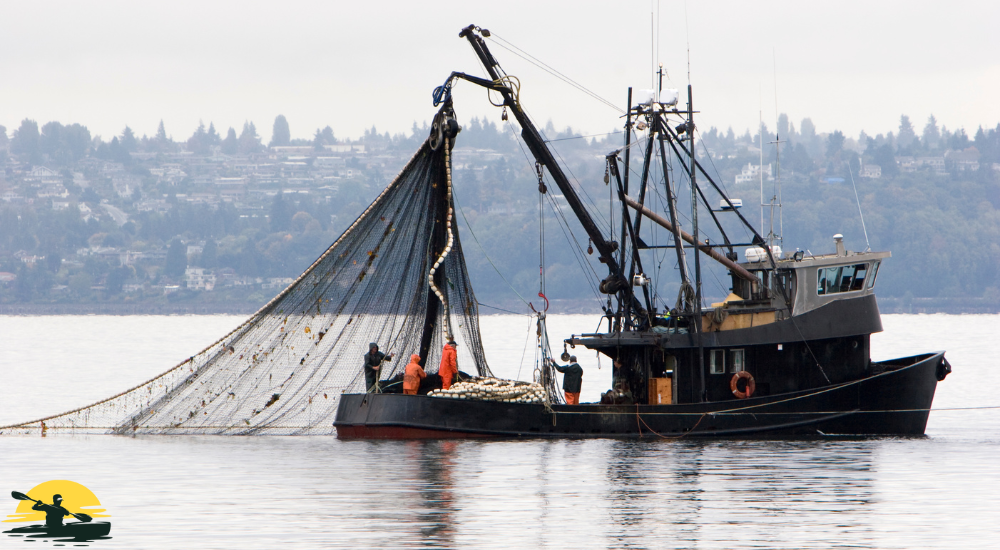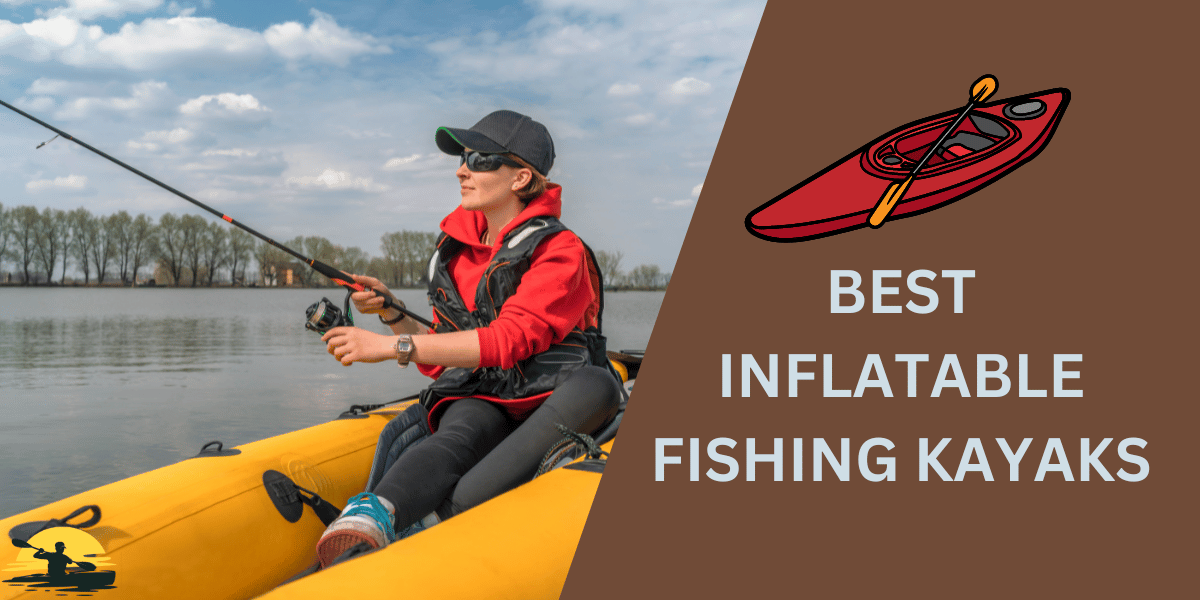
Have you ever wondered where all that fish in the grocery store comes from?
It’s not just a few guys with fishing poles! The commercial fishing industry uses massive boats and specialized gear to catch tons of fish to sell. This can put a real strain on fish populations and the health of our oceans.
But don’t worry; this article will explore the ins and outs of commercial fishing.
What is Commercial Fishing?
- Goal: Catching fish to sell for profit, not just for fun or survival.
- Key Players: Fishermen/women, boat owners, big companies, and distributors.
- Methods: There are lots of different ways to catch fish, from longlines with hooks to giant nets.
- Impact:
- It provides food and jobs, but it can lead to overfishing and harm marine life if not done responsibly.
- Some fishing methods are worse for the environment than others (e.g., bottom trawling).
- Our Role: Making informed seafood choices and supporting sustainable fishing helps protect our oceans.
What Is Commercial Fishing?
It’s not just about casting a line and hoping for the best.
Commercial fishing is about catching fish to be sold for profit. This is different from going fishing for fun on the weekend or catching just enough to feed your family. It’s a business, and it takes a whole team to make it happen.

You’ve got commercial fishermen out on the water, working hard on commercial fishing boats or commercial fishing vessels to bring in the catch. They use all kinds of special commercial fishing gear and fishing methods to find and catch the fish.
They might use big nets called gill nets to snare fish by their gills or long lines with lots of hooks.
Once the fish are caught, they need to be brought back to shore and processed. Big companies, called commercial fisheries, run these commercial fishing operations. They buy the commercial fishing gear, pay the fishermen for the fish they bring in, and get the fish ready to be sold.
The fish might be cleaned, filleted, or frozen before they’re sent off to stores and restaurants.
Commercial fishing is a big deal. It provides jobs for lots of people and helps feed the world. But it can be challenging for the ocean and its marine life. Some fishing methods can be harmful, so it’s important to understand how this industry works.
That way, we can make smarter choices about the seafood we buy and support fishing practices that are good for the ocean and everyone who depends on it.
Let’s dive deeper and explore the different ways fish are caught and how our choices can make a difference!
Commercial Fishermen Catching Methods?
There are tons of ways to catch fish, and commercial fishermen use a whole bunch of different methods and gear. It’s a whole other ballgame compared to subsistence fishing, where people see just enough for personal or family consumption.

- Longline fishing: Imagine a really, really long line – sometimes miles long! – with hundreds or even thousands of baited hooks hanging off of it. This method is often used to catch big fish like tuna or swordfish.
- Trawling: This involves dragging a huge net behind a boat to scoop up fish. Some trawls are dragged along the bottom of the ocean, while others float in the middle of the water.
- Gillnets: These are nets that are set in place and trap fish by their gills as they try to swim through.
- Traps and pots: These are used to catch things like crabs and lobsters.
- Harpooning: Some fishermen still use harpoons to catch fish, just like people did hundreds of years ago!
Here’s why it’s important to understand how commercial fishing works:
- Industrial fishing: This is a big business, and it’s really efficient at catching lots of fish. The Food and Agricultural Organization (FAO) reports that most of the world’s fish are caught using the methods above.
- Overfishing concerns: Because industrial fishing is so good at catching fish, it can lead to problems like overfishing, which means there aren’t enough fish left to reproduce and keep the fish stocks healthy.
- Environmental impact: Some fishing methods, like bottom trawling, can harm marine ecosystems on the ocean floor. Longline fisheries can accidentally catch other animals, too, like sea turtles.
- Sustainable solutions: It’s important to remember that not all commercial fishing is bad. When it’s done responsibly, it can provide food and jobs for many people. Some fishermen are even working on new ways to catch fish that are better for the ocean, such as changing how they use longline fishing to avoid catching sea turtles.
The next time you eat a fish stick or a tuna sandwich, think about the journey that fish took to get to your plate.
Understanding commercial fishing helps us make informed choices about the seafood we eat and supports practices that are good for both people and the planet.
The Impact of Commercial Fishing

Commercial fishing is a big deal for the whole planet, even if you don’t eat a lot of fish.
- Food Source: The fish caught by commercial fishermen end up in all kinds of places – the fish sticks we eat for dinner, the tuna salad we put in our sandwiches, and the fish oil supplements some people take.
- Jobs and Economy: Commercial fishing is a big part of the economy in many countries, providing jobs for millions of people.
- Bycatch: Large-scale commercial fishing can accidentally catch other animals, like sea turtles or dolphins, when using big nets or longlines to harvest fish.
- Overfishing: When fishermen catch too many fish, it can lead to overfishing, which means there aren’t enough fish left in the ocean to reproduce. This disrupts the food chain and affects the livelihoods of people who depend on fishing.
Most commercial fishing these days is done on a massive scale:
- Industrial Fishing: This involves big boats, high-tech gear, and catching tons of fish.
- Environmental Stress: Industrial fishing is really efficient, but it can put a lot of stress on the ocean, leading to problems like overfishing and harming marine ecosystems.
But it’s not all bad news:
- Responsible Fishing: When it’s done responsibly, commercial fishing can be a good way to provide food and support communities.
- Sustainable Solutions: Some fishermen are finding new ways to catch fish that are better for the ocean, such as using nets with bigger holes or avoiding fishing in certain areas.
The choices we make about the seafood we eat can have a big impact on the ocean and the people who depend on it. So, let’s learn more about where our fish comes from and how we can support sustainable fishing practices that protect our oceans for generations to come.
Conclusion
We’ve learned that commercial fishing is a big deal, with many different ways to catch fish. Some methods are better for the ocean than others.

The choices fishermen make – what gear they use, where they fish, and how much they catch – have a big impact on the health of our oceans and the marine life that lives there.
But guess what? Our choices matter, too! When we buy seafood that’s been caught in sustainable ways, we’re supporting the kind of fishing that’s good for the ocean.
It’s like voting with our wallets for healthier oceans!
We can learn about where our fish comes from and choose seafood that has been caught responsibly.
Frequently Asked Questions
What makes a fishing method “commercial?”
The key difference is the purpose. Commercial fishing aims to catch large amounts of fish to sell and make a profit. This is different from recreational fishing (for fun or sport) or subsistence fishing (for personal use or to feed a family).
Why is overfishing such a big concern for the world’s fisheries?
Overfishing happens when we take too many fish from the ocean faster than they can reproduce. This can collapse entire fish populations, disrupt marine ecosystems, and harm the livelihoods of those who depend on fishing. Effective fisheries management is crucial to prevent this.
Are there any fishing methods that are worse for the environment than others?
Yes. Some methods, like bottom trawling, can damage the ocean floor, while others, like longlines with thousands of baited hooks, can accidentally catch other species like sea turtles. Unsustainable fishing practices can harm not only the target fish but also the entire ecosystem.
What can I do as a consumer to help support sustainable fishing?
You have the power to make a difference! Choose seafood that’s been certified as sustainable by reputable organizations. This supports fishermen who are committed to protecting the ocean and ensuring there are plenty of fish for the future. Avoid processed fish products with unclear labeling and origins.
What is the role of government in managing the world’s fisheries?
Governments play a crucial role in fisheries management. They set catch limits, regulate fishing gear, and enforce laws to prevent illegal, unreported, and unregulated fishing. This helps ensure that fish stocks remain healthy and that fishing is done in a way that protects the environment.










